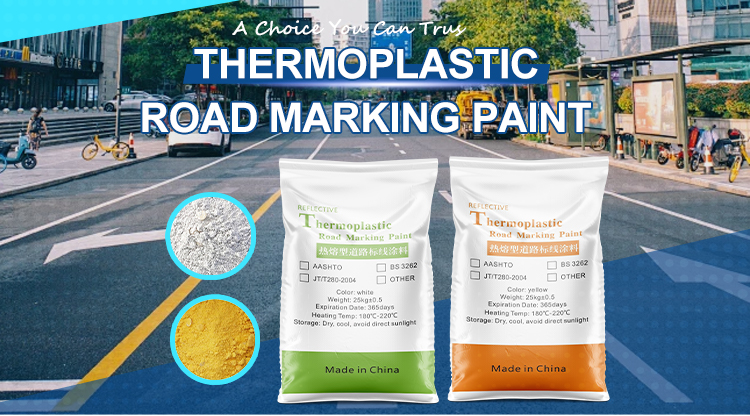Road Marking Paint and Machine Manufacturer
+86-15668659958
Road Marking Paint and Machine Manufacturer
+86-15668659958

Road traffic markings are divided into: hot-melt road markings, cold painted road markings at room temperature, colorful ground anti slip road markings, shaking ground anti slip reflective road markings, and pre formed road markings. Hot melt road marking is a widely used type of road marking in China’s traffic network. It has a short construction time, high wear resistance, and low project cost.
The key points of road traffic markings are located on the surface of the road, which can withstand sunlight, rain, wind, snow, and freezing, and are subject to the impact friction coefficient of vehicles. Therefore, there are strict regulations on their characteristics. Firstly, it is stipulated that the dry time is relatively short and the actual operation is simple to reduce the impact on transportation; Secondly, it is stipulated that the reflective surface has strong working ability, bright colors, and strong reflection brightness, which ensures excellent visibility both during the day and at night; Thirdly, it should have anti-skid and wear-resistant properties to ensure safe driving and service life.
Construction projects such as road markings, industrial zone road markings, underground parking lot markings for processing plants, underground parking space markings, school road markings, and daily residential community markings are divided into two types: cold paint markings and hot melt markings
Select special cold building coatings for road surfaces, spray paint manually, with uniform thickness and clear colors. Including parking lot, no parking double yellow line area, safety passage line, water barrier strip, directional arrow symbol, etc.
The key components of hot melt marking coating include anti-corrosion coating, glass beads, coloring paste, body fitness material filling material, preservatives, etc By utilizing the thermal ductility of anti-corrosion coatings, hot-melt architectural coatings can achieve fast drying. By utilizing the thermal adhesion of anti-corrosion coatings, road markings are firmly bonded to the ground. Adding preservatives to architectural coatings can enhance the plastic deformation of the coating, making it resistant to foundation settlement, pollution, and discoloration. The color tones of marking paint are light yellow and white. White mainly refers to titanium dioxide, active zinc oxide, lithopone, etc., while light yellow mainly refers to high-temperature resistant yellow lead. The filling material of architectural coatings has an impact on the impact toughness, wear resistance, and color of the coating. The size of the particle size has an impact on permeability and settling properties, and is also harmful to surface production and processing.
In order to improve the recognition of road markings at night, enhance the chromaticity and usability of road markings, hot-melt reflective architectural coatings add reflective glass microspheres. Glass beads are colorless, fully transparent spheres that have the functions of mapping, focusing, and fixed term reflecting surfaces for light sources. Penetrating glass beads into architectural coatings or spreading them on the surface of the coating can reflect the car headlights back to the driver’s eyes, further improving the visibility of road markings.
construction process
Our company is a professional manufacturer of road hot-melt coatings and road glass beads. If you are interested, please feel free to contact me via email at any time export@toproadtraffic.com
